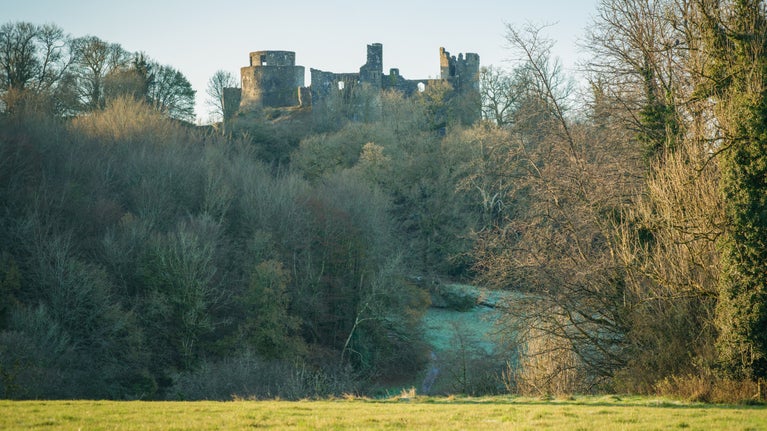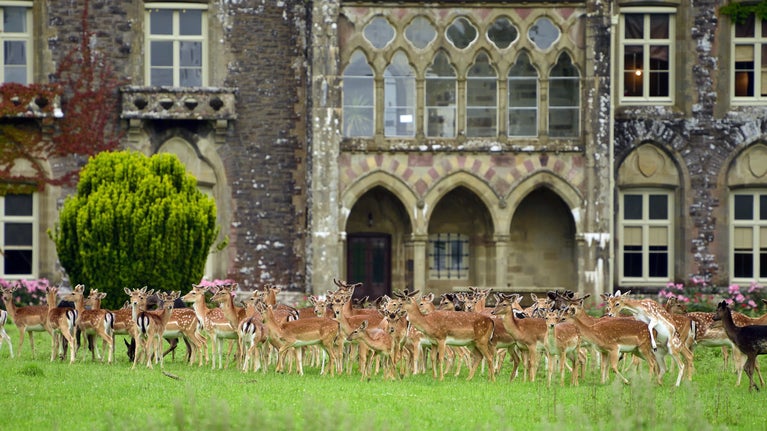Explore the parkland at Dinefwr

Jump to
The parkland at Dinefwr is steeped in Welsh history, covering an 800-acre estate on the outskirts of the old farming town of Llandeilo. Visit this Site of Special Scientific Interest (SSSI) and the first parkland National Nature Reserve (NNR) in Wales. At Dinefwr, you can experience a microcosm of Welsh heritage and natural history combined.
Vital habitats for wildlife
Dinefwr boasts a vast and diverse range of habitats, woodland, meadow, parkland and the floodplain. Nature has been truly bountiful to this place. As well as a dense population of some of Britain’s most astonishing native and migrant birds, the estate is home to many of Britain’s most elusive mammals; some of which people live a lifetime without spotting, like otters, pole cats, voles and fallow deer. There are many species of resident and migratory birds both breeding on the Estate or resting on route. Recently some significant finds of rare beetles have been discovered.
'If you take a handful of the soil at Dinefwr and squeeze it in your hand, the juice that will flow from your hands is the essence of Wales.'
- Wynford Vaughan Thomas, broadcaster, journalist and writer

The White Park Cattle
An ancient rare breed that has been associated with Dinefwr since the ninth century, and probably one of the oldest breeds of cattle native to the British Isles. The Dinefwr herd play a crucial role in the continuation of the breed as well as carrying out vital conservation grazing within the parkland.
Notable for their ancient looks, long white coats with elegant tipped horns and jet black eyes and noses. In spring you’ll see them returning to front field and shedding their winter coats, helped along by the plucking of hairs by crows, ravens and other birds who use the soft white hairs to line their nests.
Medieval deer park at Dinefwr
The estate holds a 100-acre medieval deer park. Roamed by a herd of over 100 fallow deer, you’ll witness the eerie, echoed bellows of the fallow bucks throughout the estate, as they lead up to the rutting season in October.
You'll see the Corvidae (crow family) helping with the grooming process by picking the moulting velvety skin from the beasts’ enormous antlers as we approach the rutting season.

Oldest trees in Britain
Dinefwr ancient woodland is home to some of the oldest trees in Britain. There are over 300 oak trees; some that are over 400 years old, making them true veterans and providing vital ecosystems of diverse species. Even when the trees die or fall to the ground, they are not removed. They stay where they fall to provide habitat for plant, wildlife and fungi species.
New life
As well as caring for the mature trees new ones are planted so there will always be trees at different stages. More trees will be planted in the Inner and Outer Cow Park to recreate the 18th-century design.
Eventually these plantations will be managed like the deer park, as grazed wood pasture. In this way, Dinefwr will always be famous for its veteran trees.
You might also be interested in
History of Dinefwr
Reclaimed by the descendants of a powerful Welsh Prince, Dinefwr Park and Newton House were home to the Rhys/Rice family for over 300 years.

‘Capability’ Brown walk at Dinefwr
Walk beside historic ancient trees on a circular route in a landscape designed by Lancelot 'Capability' Brown, with the chance to spot the resident fallow deer.

Dinefwr Park wildlife walk
This circular walk through historic parkland offers a wealth of wildlife, including the fallow deer herd, plus a medieval castle and 17th-century mansion.
